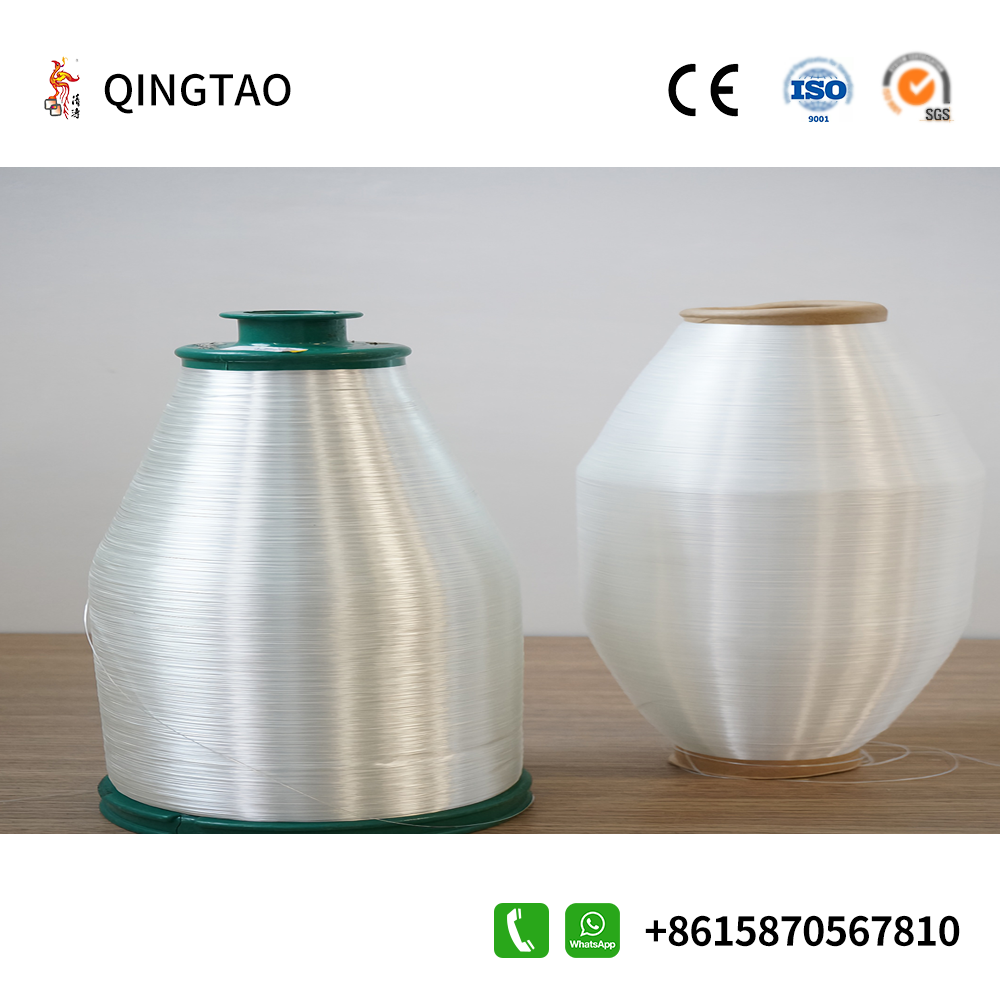1. Analysis of the current situation of
glass yarn industry
①The industry is highly concentrated and presents an oligopoly competition pattern
Today, the world's top six Fiber Glass companies account for about 75% of the world's production capacity, and the oligopoly competition pattern has not changed in the past decade. Due to high barriers to entry, the grid cloth industry pattern is expected to remain stable in the coming period.

②Chinese enterprises insist on independent innovation, and their technological level gradually catches up with European and American enterprises.
Since the glass yarn industry has a highly concentrated competitive landscape, it is difficult for new entrants to acquire the core technology of glass yarn production through technology transfer. Facing overseas glass yarn companies with decades of development history, Chinese glass yarn companies have gradually caught up with foreign companies in terms of production technology and technical level by continuously enhancing their independent innovation capabilities and increasing investment in technology research and development. Domestic enterprises represented by Jushi Group are in a leading position in core technologies such as large-scale tank kiln construction, large drain plate processing, and pure oxygen combustion.
③The production capacity growth of European and American glass yarn companies has slowed down, and the domestic glass yarn industry is booming.
In recent years, domestic Fiber Glass manufacturing companies have seized a large number of overseas markets by virtue of technological progress, cost reduction and continuous product quality improvement. Due to the obvious competitive advantages of domestic Fiber Glass companies, foreign traditional Fiber Glass companies have basically had no new production capacity in the past five years. China's Fiber Glass production capacity has averaged a compound annual growth rate of 6.65% in the past three years, while the global production capacity has an average annual compound growth rate of only 1.70% during the same period. Domestic Fiber Glass production capacity has exceeded more than 50% of the global Fiber Glass production capacity. .
2. Analysis of development trends of glass yarn industry
①The competitive landscape of highly concentrated industries remains unchanged
The industry's high entry barriers and the downstream composite materials industry's emphasis on Fiber Glass brand, quality, and corporate visibility have enabled the existing competitive landscape to be maintained, and the advantages of industry leaders will become more obvious, especially those represented by Jushi Group China's glass yarn companies will play a leading and leading role in the global glass yarn industry in the future.
②The industry is in an overall upward period
In the coming period, global market demand, especially demand in emerging market countries, will still maintain a high growth rate. According to Lucintel, a global professional research institution, in its "2012-2017 Global glass yarn Market: Trends, Forecasts and Opportunities Analysis" research report, the total usage of glass yarn in the composite materials market is expected to grow by 6.9% from 2012 to 2017. % compound annual growth rate, the Fiber Glass market will reach US$11.2 billion by 2015. Although the growth of global market demand is slowing down, companies still have huge potential for improvement and improvement in adjusting product structure, especially in developing Fiber Glass products, providing space for the further development of advantageous companies.
③China is accelerating the elimination of backward production capacity
As the state strengthens supervision of high-energy-consuming and polluting enterprises, it is expected that the pace of eliminating small-scale glass yarn enterprises with high energy consumption and pollution will accelerate, effectively curbing low-level duplication and blind expansion of the glass yarn industry, standardizing the order of market competition, and promoting the industry Structural upgrades. The Ministry of Industry and Information Technology promulgated and implemented the new "Grid Fabric Industry Access Conditions" in 2012. Compared with the access conditions in 2007, the most important features of the newly implemented access conditions are that they involve enterprise layout, process equipment, energy consumption, and environmental protection. The entry barriers in many aspects have been comprehensively improved. In 2013, the Fiber Glass Association and the Ministry of Industry and Information Technology conducted a preliminary review of 45 Fiber Glass companies and announced 30 companies that met the access conditions. On the one hand, a large number of companies with backward technologies such as platinum-substitute furnaces and clay crucibles will be eliminated. Production capacity, on the other hand, will force small and medium-sized enterprises to increase investment in technological transformation. It is expected that by the end of the "Twelfth Five-Year Plan", the production capacity of the pool kiln wire drawing production line will account for 95% of the national production capacity.
④Technological progress is accelerating and application areas are expanding.
Leading technologies represented by the design and construction of large tank kilns, pure oxygen combustion, fully automatic logistics transportation, new glass formulas, large leaky plate processing, waste wire recycling, etc. will gradually become popular in the global glass yarn industry and improve production efficiency. At the same time, it will also help enhance the performance of Fiber Glass products and reduce production costs, thus enhancing the advantages of Fiber Glass replacing other traditional materials. In addition, functional Fiber Glass with special properties such as high strength, high modulus, low dielectric, high temperature resistance, insulation and corrosion resistance will break through technical bottlenecks and achieve industrial scale production, which will inevitably further expand the application fields of Fiber Glass. , new automobiles, new energy (wind power), shipbuilding, aircraft, high-speed railways and highways, anti-corrosion, environmental protection and other fields will become new growth points for the glass yarn industry.
⑤ Domestic Fiber Glassation companies accelerate the [going out" strategy
Against the backdrop of the government encouraging domestic enterprises to [go global" and the general trend of global economic integration, and facing the challenge of rising international trade protectionism, domestic Fiber Glassation companies will continue to accelerate the pace of [going global". Through direct investment and mergers and reorganizations, the breadth and depth of Chinese Fiber Glass companies' participation in the international market will continue to expand.



